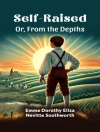In ‘Gideon’s Band: A Tale of the Mississippi, ‘ George Washington Cable weaves a rich tapestry of life along the Mississippi River during the Reconstruction era. Employing a unique blend of regional realism and lyrical prose, Cable immerses readers in the complex social, cultural, and racial dynamics of New Orleans and its surrounding areas. With sharp characterizations and a keen eye for detail, the novel explores the evolving relationships between different communities as they grapple with the remnants of the Civil War, embodying the tensions of a transitional society caught between old and new values. George Washington Cable, a prominent American author and social reformer, was deeply influenced by his Southern heritage and the turbulent history of Louisiana. Born in New Orleans, he dedicated his literary career to highlighting the multidimensional aspects of Southern life while advocating for racial equality and social justice. Cable’s experiences and observations of the post-war South play an integral role in shaping the narrative, as he seeks to humanize the complexities of the region’s cultural identity. Readers interested in Southern literature, historical narratives, or the intricacies of American life during a pivotal moment in history will find ‘Gideon’s Band’ to be a compelling and enlightening read. Cable’s vivid storytelling and thoughtful examination of societal changes make this novel a significant contribution to American literature and an essential exploration of its historical context.
About the author
George Washington Cable (1844–1925) was a distinguished American novelist and short story writer, notable for his depictions of Creole life in his native New Orleans, Louisiana. His works are characterized by a keen observation of local color and a commitment to reform regarding racial and social issues of the post-Civil War South. Cable’s literary work often reflects his deep interest in and empathy for the multicultural society of New Orleans, a city with a rich blend of French, Spanish, African, and American cultures. One of his notable works, ‘Gideon’s Band: A Tale of the Mississippi’ (1914), is illustrative of his narrative talent and his ability to weave gripping tales set against the tapestry of Southern life and history. This novel, like many of his others, provides a vivid account of life along the Mississippi River, reflecting Cable’s recurrent theme of portraying the complex and often troubled relationships among different racial groups. Regarded as a major Southern author, and a contemporary of Mark Twain, Cable’s works prefigured the Southern Renaissance in literature and had a substantial influence on later writers who explored similar themes in the context of the American South. His reputation is cemented not just as a writer of regional tales, but as a progressive voice advocating for racial equality and social justice through his storytelling.












